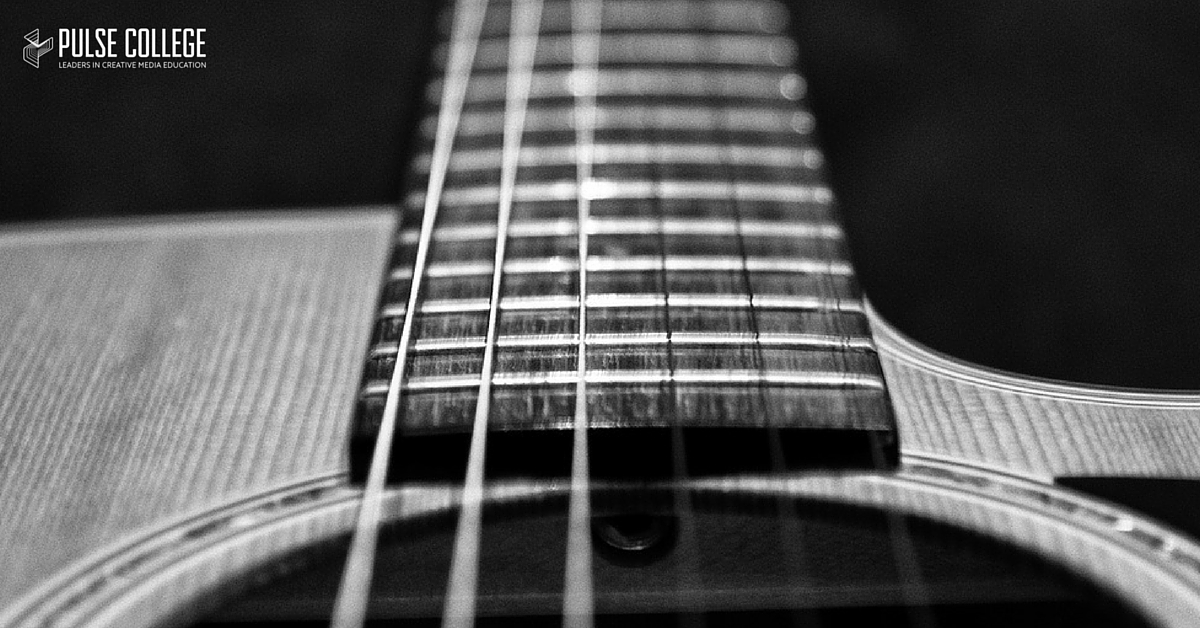
Pretty much every bedroom recording artist who’s tried it knows that introducing an acoustic guitar into the mix brings new challenges. Without using the kind of techniques you learn on music production courses, the results inevitably sound muddy and sonically incoherent on playback. Here are a few quick tips that will hopefully help you avoid some of the pitfalls and frustrations of recording acoustic music.
Get in the right mind-set
The most fundamental error a recording artist can make when recording an acoustic track is to go in with the same mentality as if they were recording with a solid body or semi acoustic. One particular challenge is the deep resonance that emanates from your average dreadnought or even auditorium size guitar. This can often drown out the rest of the mix with a bassy wash, and for that reason you’ll probably have to go pretty heavy on the EQ. As mentioned over at Music Radar, you’d be best off starting with 100Hz as a baseline and nudging upward from there.
Use what’s available to you
Some electro-acoustics come with internal pickups, which allows you to connect straight to the mixing desk. Obviously this will alter the sound, but the beauty of using the pickups is that you can have a line running directly to the mixing desk as well as a mic setup, meaning you can record both simultaneously and then decide which track to use afterwards.
In addition, an often over-looked feature on many electro-acoustics is a built in pre-amp, which can help beef up the instrument’s sound. However, it will obviously lend the recording a different quality that may not be as “organic” a sound as you’d want it to be – again, this is down to personal preference.
Taking the mic
There’s no way around it: micing up an acoustic is a bit of a nightmare for an amateur! This is due to the sheer number of variables that you have to bear in mind. Music production courses will generally teach students that, as a general rule of thumb, you’re best off with a stereo mic set-up, with one mic placed in front of the neck and one in front of the sound hole. You’ll have to play around with the distance of the mics, but one to two feet is usually a good place to start. Generally you’re also better off working with a condenser mic for the added sensitivity, though this ultimately comes down to personal preference. This video gives a good comparison of the different mic options available.
Learn to compromise
Obviously though, not all amateur musicians would have the resources to invest in two mics and sometimes it’s just a matter of working with what you’ve got. The issue with a single mic set up is that there are subtle nuances in the acoustic output of any given part of the guitar. Place the mic over the fretboard and the recording will likely accentuate and sharpen the sound, but will also lose some of the low end resonance that emanates from the body. In addition, when two tracks are recorded it’s much easier to achieve an optimum balance in the mix down stage. But with only one mic to play with, it becomes more challenging to capture the tonal qualities of the guitar as much as possible.
As recommended by the good folk over at homerecording.com, the best compromise is usually to place the mic in front of the fretboard near the twelfth fret for a more balanced sound, and move it closer or farther away depending on how much room ambience you want the recording to retain and how much of a “thump” you want the sound to have. There are so many factors to bear in mind here, but a good place to start would be this video demonstration of a one mic setup.
Music Production Courses – Learn from the Professionals
With increasingly affordable equipment and software, bedroom recording set-ups can achieve some amazing results. However, there really is no substitute for guidance and input from seasoned professionals. Here at Pulse, we offer a number of music production courses overseen by seasoned professionals with decades of experience between them. We have a few open events coming up – why not book a spot and find out more about what Pulse can offer you?
[openday]
FOLLOW US